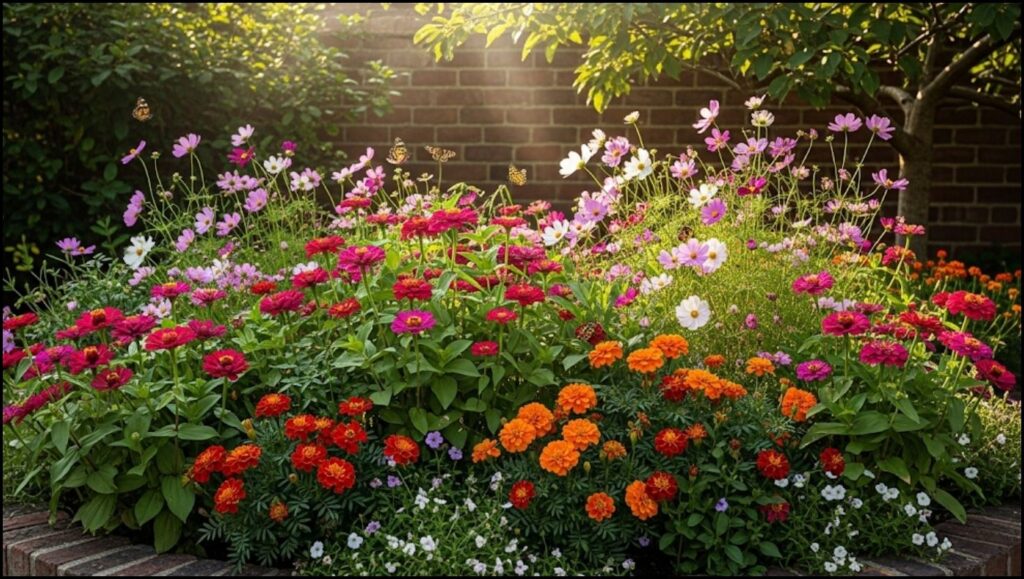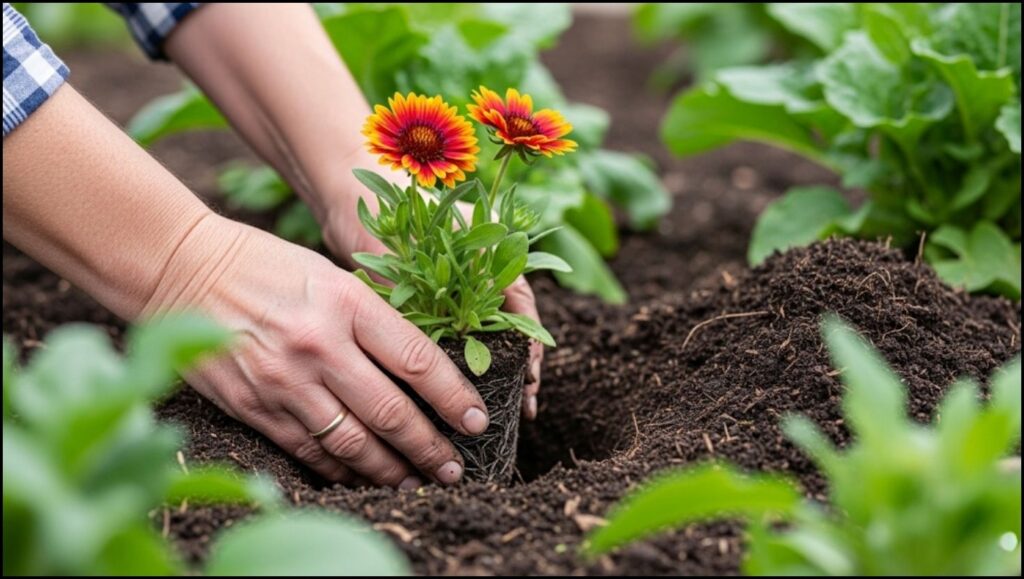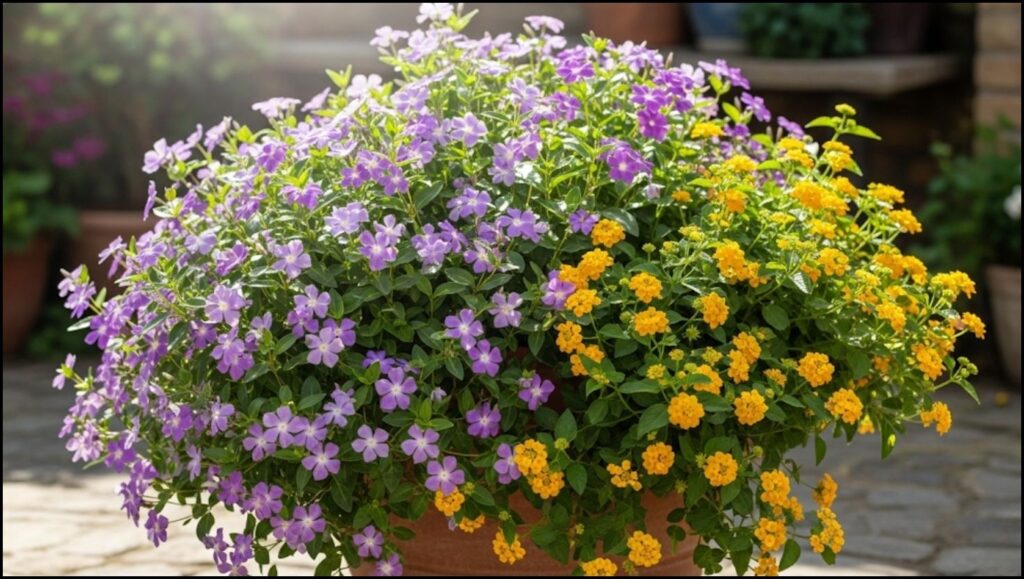
As the sun lingers long into the evenings and the days settle into a warm, steady rhythm, many gardeners hang up their trowels, believing the planting season is behind them. But I’m here to let you in on a little secret: July is not an end, but a glorious opportunity. This is the perfect moment to plant for a spectacular late-summer and autumn display. With warm soil and plentiful sun, you can quickly establish a fresh wave of color. We’ve curated a list of the best flowers to plant in July, ensuring your garden remains vibrant and full of life right until the first frost. Let’s dive into the blooms that will give your garden a brilliant second act.
Quick Tips for July Planting
Here’s what you need to know for success:
- Favor Transplants: For many flowers, well-established “starts” or transplants from a nursery will give you a significant head start over seeds.
- Water Deeply & Smartly: Water new plantings deeply in the morning to hydrate them before the day’s heat and to minimize fungal issues.
- Amend Your Soil: Refresh tired summer soil with a 2-inch layer of compost to provide nutrients and help retain essential moisture.
- Embrace the Heat: Choose varieties known for their resilience in high temperatures. These are the plants that truly shine in mid-summer.
Why July Isn’t Too Late for Fabulous Flowers
Planting in the peak of summer might seem counterintuitive, but nature offers a few key advantages this time of year. The soil is thoroughly warm, which, as the University of New Hampshire Extension explains, encourages seeds to germinate rapidly and roots to establish quickly. Unlike the cool, damp soil of spring, July’s warmth signals to plants that it’s time to grow, and fast.
In my own garden, I view July planting as a bridge. It’s the perfect way to fill in any gaps that have appeared and to succeed the early summer bloomers that may be starting to fade. By choosing the right flowers to plant in July, you’re essentially planning for a seamless transition into a lush, fall blooming flowers display that will carry the beauty of the season for months to come.
Before You Plant: Keys to July Gardening Success
A little preparation goes a long way, especially when dealing with summer heat. Setting your new plants up for success is simple and ensures they thrive rather than just survive.
Refreshing Your Garden Beds
By July, your spring plantings have likely used up many of the available nutrients in the soil. Before adding new flowers, take a moment to rejuvenate the planting area. Gently work a 2-inch layer of high-quality compost or well-rotted manure into the top 6 inches of soil. This simple step improves soil structure, reintroduces vital nutrients, and, most importantly, helps the soil retain moisture—a critical factor during hot weather.
Watering Wisely
The number one rule for summer planting is smart watering. Instead of frequent, shallow sprinklings, which encourage weak, surface-level roots, it’s best to water deeply and less often. Water in the early morning at the base of the plants, allowing the moisture to soak down 6 to 8 inches. This encourages plants to develop deep, resilient root systems that can better withstand heat and drought. A soaker hose or drip irrigation system is an excellent tool for this, delivering water exactly where it’s needed without waste.

Seeds vs. Starts: Making the Right Choice
For many of the flowers on our list, you have two options: planting seeds directly into the garden or purchasing small plants, often called starts or transplants.
- Seeds: Best for fast-growing annuals like zinnias, cosmos, and sunflowers. They are economical and you’ll often find a wider selection of unique varieties.
- Starts: My go-to choice for getting a jumpstart on color. For plants like lantana or vinca, using established starts from a local nursery means you’ll see blooms much sooner. They are more forgiving and better equipped to handle the initial shock of summer planting.
Our Top 9 Flowers to Plant in July
Here are nine reliable, beautiful, and hard-working flowers that will reward your mid-summer efforts with an abundance of blooms.
1. Zinnia (Zinnia elegans)
If I could only plant one flower in July, it would be the zinnia. These cheerful, daisylike flowers come in nearly every color imaginable, from electric lime to deep magenta. They absolutely adore the heat, grow incredibly fast from seed, and will produce a continuous supply of blooms for your garden and cutting arrangements until the first hard frost. A common mistake I see is not giving them enough sun; they need at least 6-8 hours of direct sunlight to truly flourish.
2. Cosmos (Cosmos bipinnatus)
With their delicate, feathery foliage and simple, charming blossoms that dance in the breeze, cosmos lend an airy, wildflower feel to any garden. They are ridiculously easy to grow from seed, tolerate poor soil, and are drought-resistant once established. Plant a patch of the ‘Sensation’ mix for a classic blend of white, pink, and crimson that attracts pollinators like bees and butterflies.
3. Marigold (Tagetes spp.)
A true workhorse of the summer garden, marigolds are prized for their bright, pom-pom-like flowers in shades of yellow, orange, and deep red. These heat-tolerant annuals are famously resilient and can even help deter certain pests. French marigolds (Tagetes patula) are wonderful for edging beds and filling containers, while the taller African marigolds (Tagetes erecta) make a bold statement in the back of a border.

4. Sunflower (Helianthus annuus)
It’s not too late to plant sunflowers! While you may not get the towering giants, choosing a quick-maturing variety like ‘Teddy Bear’ or ‘ProCut Orange’ will give you gorgeous blooms in just 50-60 days. There is nothing quite like the sight of a sunflower turning its face to the sun. Plant seeds directly into the ground and watch the magic happen.
5. Vinca (Catharanthus roseus)
Also known as periwinkle, vinca is the undisputed champion for hot, dry, and sunny spots where other plants struggle. Its glossy green leaves and pinwheel-shaped flowers in shades of white, pink, and lavender look fresh and beautiful even on the most scorching days. I love using trailing varieties in window boxes and hanging baskets for a cascade of non-stop color. They are one of the most reliable late summer flowers you can find.
6. Moss Rose (Portulaca grandiflora)
For a low-growing, jewel-toned groundcover, look no further than moss rose. The succulent-like foliage helps it conserve water, and its ruffled, rose-like flowers open in the sunshine, creating a dazzling carpet of color. It’s perfect for rock gardens, the edges of a hot driveway, or spilling over the sides of a container. They thrive on neglect, making them a fantastic, low-maintenance choice.
7. Gaillardia (Gaillardia pulchella)
Commonly known as blanket flower, gaillardia’s fiery red and yellow blooms look like miniature sunsets. This North American native is incredibly tough, thriving in full sun and well-drained soil. It’s a perennial that acts like an annual in its first year, blooming profusely from a summer planting all the way through fall, providing a crucial late-season food source for pollinators.
8. Lantana (Lantana camara)
A magnet for butterflies and hummingbirds, lantana offers clusters of tiny, vibrant flowers that often change color as they age. It’s exceptionally heat and drought-tolerant. Available in both mounding and trailing forms, it’s versatile enough for garden beds, borders, and containers. In my experience, it’s one of the few plants that seems to bloom more intensely as the temperatures rise.
9. Black-Eyed Susan (Rudbeckia hirta)
To ensure your garden is bursting with golden-yellow glory as summer fades into autumn, plant Black-Eyed Susan starts in July. These iconic, daisy-like flowers with their dark brown centers are the epitome of late summer flowers. As a short-lived perennial or biennial, planting them now from nursery starts guarantees a fantastic show this year that will lead the charge for your fall blooming flowers.
TOOLS AND MATERIALS BOX: What You’ll Need:
- Hand Trowel: For digging precise planting holes.
- Gardening Gloves: To protect your hands.
- Organic Compost: To amend and enrich your soil.
- Watering Can or Soaker Hose: For deep, targeted watering.
- High-Quality Seeds or Nursery Starts: Choose the right plants for your space and goals.
A Garden That Keeps on Giving
The beauty of a garden is its constant evolution, and July is your invitation to become an active partner in that change. By choosing a few of these resilient, sun-loving blooms, you’re not just filling a space; you’re investing in weeks of future joy. You are curating a vibrant palette of color and life that will greet you on warm August afternoons and follow you into the crisp, golden light of autumn.
So, grab your trowel and a cool drink. Your most beautiful late-summer garden is just waiting for you to plant it.
How Often Should You Water a Lantana? A Gardener’s Guide to Thriving Plants
